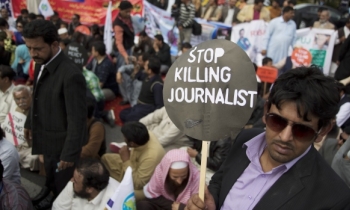Everyone loves to see changes at the top. And when these are based on statistics that reveal enough to arouse interest, it makes for a good read. The National Readership Survey (NRS) 2005 results, the second tranche of which has just been released, makes for such a good read.
Consider the newspaper segment. In NRS 2003, the most widely read daily Dainik Bhaskar was ahead of its next placed rival Dainik Jagran by about 8 lakh. The latter clocked an impressive 42 per cent growth to beat the former to the tape this year. Dainik Jagran has now zoomed way ahead after this lap with a sizeable lead of 38 lakh.
The first ten in the readership race sees some changes after every lap. Most other variations are not startling, but Malayala Manorama seems to be running out of breath after every lap — from third in 2002 to fifth in 2003 to tenth in 2005. Manorama's case is not like that of Bhaskar which lost out on rank, but still registered a 10 per cent plus growth. This Malayalam daily's readership figures have been has been shrinking consistently.
Despite the noisiest my-circulation-is-larger-than-yours campaigns being waged by English dailies, it is only one which finds itself in the top ten bracket. The rest in the elite ten are all language dailies with as many as five of them being published in Hindi.
The magazine race has seen more fluctuating fortunes. As in the case of dailies, the first two from the previous NRS have interchanged positions. Saras Salil had a lead of almost 35 lakh over India Today (Hindi) in 2003. The latter accelerated by a zipping 80 per cent plus growth rate to steam ahead of the former. It is a neck-and-neck contest now with barely 1.5 lakh readers coming between the two.
There are as many as four new entrants — Kungumum, Kumudam, Sarita and Swati SVP — in the first ten list. Kungumum, which was nowhere on the horizon after the last round, sped by an blitzing 600 per cent rate of growth. The cause for worry in this segment too should be most for the weekly Malayala Manorama which has not only fallen behind on rankings, but has also seen depleting readership numbers.
Those who had sounded the death knell for the print media will also have to wait for a few more NRS laps. The reach of the press medium (dailies and magazines combined) has increased from 179 million to 200 million in the last three years — as a proportion reached of population aged 15 years and above it has increased from 26.4 per cent to 27.4 per cent.
Literacy as measured in the NRS (the ability to read and understand any language) has risen from 62.5 per cent to 70.6 per cent. The rise has been more in rural areas (nearly ten points from 55.6 per cent to 64.6 per cent) than in urban India (79.3 per cent to 84.5 per cent). One would expect this to boost the market for the press.
However, the reach has fallen in urban India — down from 48 per cent to 46 per cent. Rural India has bridged the gap considerably — the reach there rising from 17 per cent to 19 per cent — needless to say, on a much larger population base. The number of readers in rural India is now roughly equal to that in urban India.
Dailies have driven this growth in the print media, their reach rising from 23 per cent to 24 per cent. Magazines, on the other hand, have declined in reach from 13 per cent to 10 per cent over the last three years. There is, however, still significant scope for growth, since there are as many as 314 million people who can read and understand a particular language but do not read any publication. Affordability of newspapers and magazines is not seen as a constraint since 21 million of these literate non-readers belong to the upscale SEC A and B segments.
Satellite television has grown explosively in reach — from 134 million individuals watching in an average week in 2002 to as many as 190 million individuals in 2005 — almost catching up with the number of readers. The time spent reading has gone up quite significantly though — from 30 minutes daily on an average to 39 minutes per day over the last three years. The increase has been sharp both in urban India (from 32 to 42 minutes daily) and in rural India (from 27 to 35 minutes daily).
Radio’s reach has stagnated at 23 per cent of the population listening to any station in the average week. It has improved its performance in urban India (23 per cent listen to the medium, up from 20 per cent three years ago) primarily because of FM. In rural areas, the reach has dropped — 23 per cent of village folk listen nowadays compared to 25 per cent three years ago.









